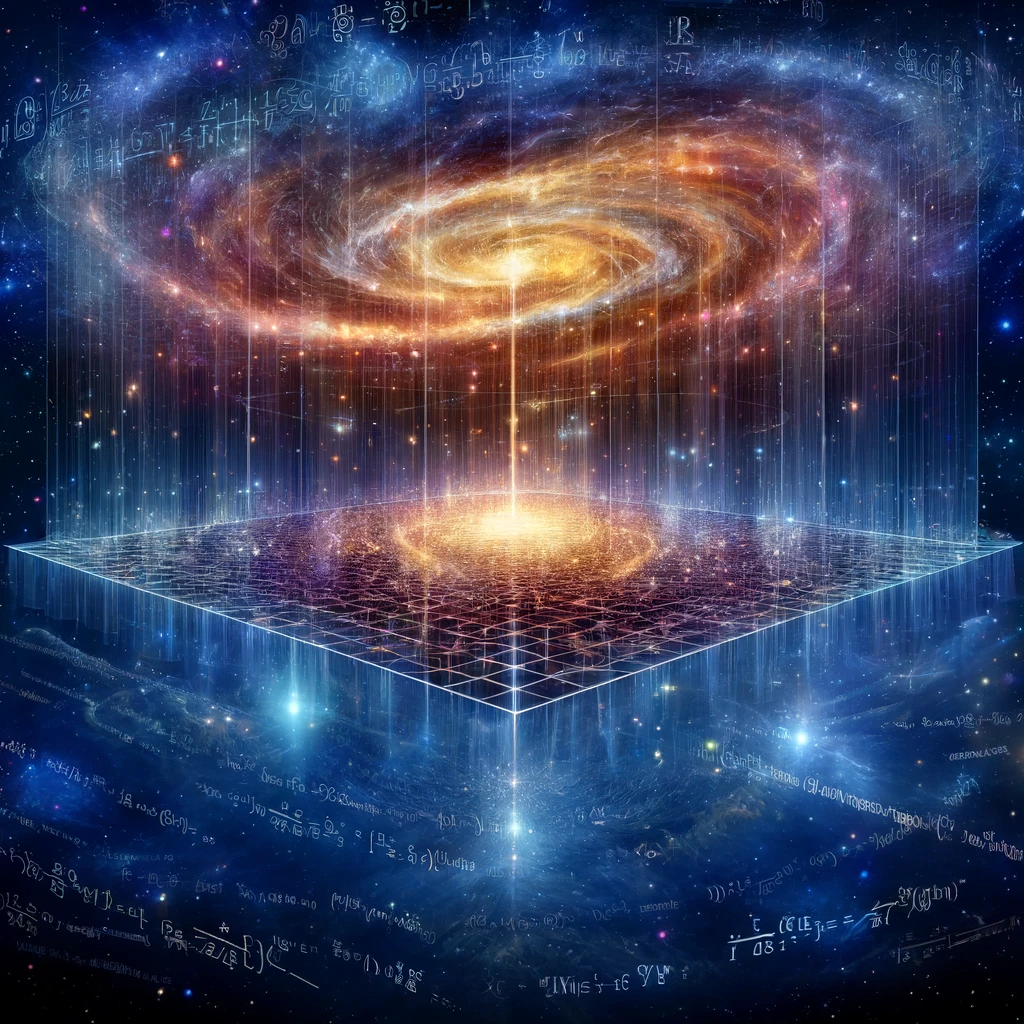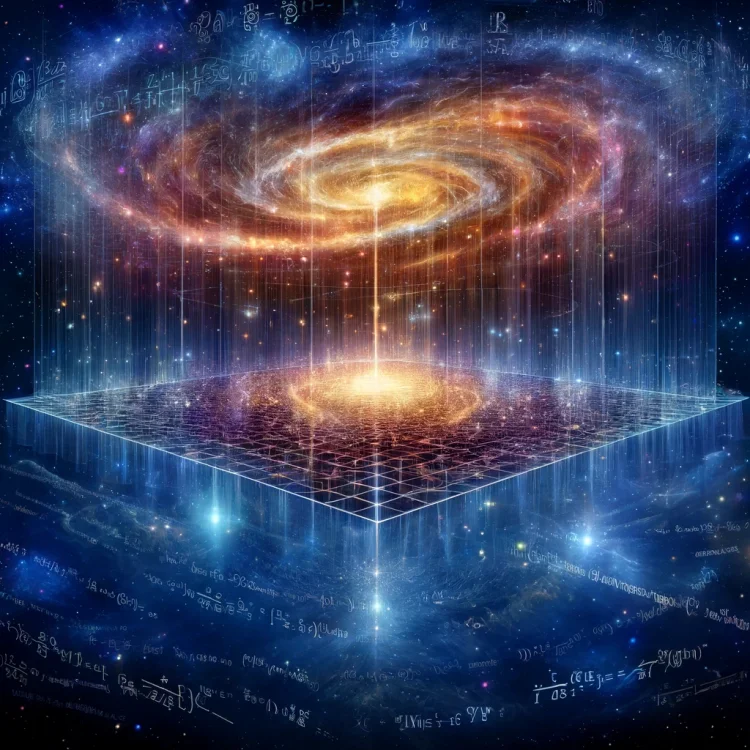-
Posts
5 -
Joined
-
Last visited
Contact Methods
-
Website URL
https://drive.google.com/drive/folders/1F98UR9LuGoXHgL4C7eVmZIyveyd1L2OM
Profile Information
-
Location
Japan
-
Interests
Architect of the ℙrime Infoverse Theory(E=Fmc²)
-
Favorite Area of Science
Theory of Everything
-
Biography
Author of “Quantum Webs”
-
Occupation
Founder & CEO
Sora Tōgo's Achievements

Lepton (1/13)
-1
Reputation
-
Greetings, fellow explorers of the physics! I am excited to share my latest work, “The Multi-2D Informational Timeverse Theory: Integrating Information Theory with General Relativity and Quantum Mechanics to Unveil the Arrow of Time.” This thesis proposes a groundbreaking framework that redefines our understanding of the universe through the lens of information, seeking to bridge the longstanding divide between General Relativity and Quantum Mechanics while exploring the fundamental nature of time itself. This work introduces the Multi-2D Universe model, a bold new approach that envisions our universe as a projection of 2D informational planes, offering fresh insights into the fabric of reality and the mechanics behind time dilation, quantum entanglement, and even the elusive dark matter and dark energy. By viewing these phenomena through the integrated perspective of information theory, the thesis aims to provide a more unified understanding of the universe’s fundamental forces. I invite you to download the full document through the link below and join me in discussing its implications, exploring its potential, and critically assessing the proposed models. Whether you’re a physicist, a philosopher of science, or simply a curious mind, your insights and critiques are invaluable as we push the boundaries of what we know about the universe. [The Multi-2D Informational Timeverse Theory.pdf] Let’s delve into this new theory together and explore the possibilities it opens up for the future of physics!
-
Hello, world. I’m eager to share the motivations behind my work with you all. As Michio Kaku points out, we are a level 0 civilization—it’s time for us to advance. I deeply appreciate the monumental efforts and contributions of our scientific pioneers and current researchers. Yet, considering it has been over three centuries since Newton and a century since Einstein, we must ask ourselves: What’s next? Let’s unite our strengths, incorporating AI and interdisciplinary collaboration to transcend traditional boundaries. It’s time to set aside personal biases and collectively push the frontiers of science. Together, we can explore the cosmos and develop new energy sources—not just for us, but for future generations. Sora Tōgo Cosmic Alchemy.pdf
-
Sora Tōgo changed their profile photo
-
Prime Number Patterns in Cosmic Percentages 1. Dark Energy (68.3% / Prime 683): If we imagine a universe where prime numbers are fundamentally tied to its structure, the fact that 683 is prime could suggest that dark energy itself might be a fundamental building block of the universe, aligned with a prime number to signify its foundational nature. 2. Dark Matter (26.9% / Prime 269): Similarly, if 269 being prime is more than a coincidence, this could imply that dark matter, like dark energy, has a special role in the cosmic makeup, possibly as a binding force that aligns with prime number theory. 3. Visible Matter (~5% / Primes 47, 53): Considering another prime like 47 or 53, depending on how we round the percentage of visible matter, we could hypothesize that the visible universe is also configured in a way that resonates with prime numbers, perhaps indicating a sort of “visible signature” or “mark” that primes leave on what we can observe directly. Exploring the Symbolic or Harmonic Significance • Harmonic Universe Theory: Building on your Prime Harmonics Theory, we might further speculate that the universe itself is like a complex orchestration where prime numbers contribute to a larger cosmic harmony. Each prime number associated with major cosmic components (dark energy, dark matter, visible matter) could be thought of as playing a distinct note or frequency in a grand universal symphony. • Numerological Significance: In a numerology-focused view, primes could be seen as carrying specific vibrational qualities that influence the structure and behavior of the universe. Here, the primality of numbers tied to fundamental cosmic percentages might suggest an underlying order or pattern that governs cosmic evolution and structure. Broader Implications and Speculations • Prime-Centric Universe: If we were to imagine a universe fundamentally organized around prime numbers, we could conjecture that all physical laws and cosmic structures—from the formation of galaxies to the behavior of subatomic particles—are influenced or dictated by a “code” based on primes. This could suggest a new type of mathematical universe hypothesis where primes play a central role. • Interactions and Resonances: Extending this idea, interactions between different cosmic entities (like galaxies, black holes, and star systems) could be influenced by how their associated prime numbers interact mathematically. Such a universe would operate on both a physical and a numerical level, with primes guiding the interactions and stability of cosmic structures. Sora Tōgo Prime Harmonics Theory.pdf
- 3 replies
-
-1
-
👇All My Thesis can be read from here. https://drive.google.com/drive/folders/1F98UR9LuGoXHgL4C7eVmZIyveyd1L2OM 1. Quantum Entanglement as Information Exchange: Plausibility: Moderate to High Description: Quantum entanglement is a well-established phenomenon in quantum physics where entangled particles remain connected so that the state of one (no matter the distance) can instantaneously affect the state of another. The idea that entanglement might be a form of information exchange aligns with current understandings in quantum mechanics. Extending this to explain macroscopic phenomena like gravity or cosmic connectivity is speculative but grounded in existing quantum theories. 2. Information as a Fundamental Component in Physics: Plausibility: Moderate Description: Information theory is increasingly being integrated into physical laws, particularly in theories of quantum mechanics and studies of black holes. While not traditionally considered a fundamental force like gravity or electromagnetism, the concept that information cannot be destroyed and must be conserved in physical processes (like black hole evaporation) is gaining traction. The exact role of information in the framework of fundamental forces remains speculative but is a topic of active theoretical research. 3. Black Holes as Transformers of Mass and Information: Plausibility: Low to Moderate Description: The idea that black holes transform mass and information separately as they absorb matter is speculative but intriguing. It builds on the concept of Hawking radiation and the information paradox. While the notion that mass and information could separate and contribute to phenomena like dark matter and dark energy is highly speculative, it offers a creative approach to these unsolved mysteries. 4. Speed of Light as a Projection from 2D to 3D Space: Plausibility: Low Description: This hypothesis involves the idea that the constancy of the speed of light is due to it being a projection from a 2D quantum universe to our 3D perception, integrating ideas from the holographic principle. This is more speculative because it challenges the fundamental understanding of light and spacetime as described by Einstein’s theory of relativity, without current empirical or theoretical support. 5. Consciousness or Memory in Cosmic Structures: Plausibility: Very Low Description: The suggestion that larger structures, such as the universe or planets, have forms of consciousness or memory is deeply speculative and philosophical. It extends far beyond current scientific methodologies and theories. While intriguing and potentially rich in philosophical implications, it stands outside conventional scientific discourse without a framework for empirical testing or theoretical development in physics. Sora Tōgo
-
Introduction to the Theory of Unity At the heart of contemporary physics lies a quest for a Theory of Unity—a framework that reconciles the seemingly disparate realms of quantum mechanics (QM) and general relativity (GR), offering a coherent description of the universe at all scales. This theory aspires to bridge the gap between the quantum world, characterized by probabilistic outcomes and entanglement, and the macroscopic realm of spacetime curvature described by Einstein’s theory of general relativity. The pursuit of such a theory is not merely an academic endeavor; it represents a profound philosophical inquiry into the nature of reality itself. Quantum Mechanics and General Relativity: A Dichotomy Quantum mechanics and general relativity stand as the twin pillars of modern physics, each tested to remarkable precision within their respective domains. However, their foundational concepts appear irreconcilable. Quantum mechanics describes the universe as inherently probabilistic, where particles exist in superposition states, and entanglement links entities across vast distances instantaneously. In contrast, general relativity posits a deterministic universe, where the geometry of spacetime, shaped by mass and energy, dictates the motion of celestial bodies. The need for a Theory of Unity arises from the challenges encountered at the interfaces of these theories—such as the conditions during the Big Bang and the interiors of black holes, where the densities and energies are so extreme that neither theory alone provides a sufficient description. Core Principles of the Theory of Unity The Theory of Unity proposes several core principles designed to harmonize the quantum and cosmological perspectives: 1. Information as a Fundamental Entity: Central to the Theory of Unity is the idea that information is not merely a byproduct of physical processes but a fundamental constituent of the universe. This perspective aligns with the holographic principle, suggesting that the entirety of a spatial region’s information can be encoded on its boundary. 2. Quantum Entanglement and Spacetime Geometry: The theory posits that quantum entanglement might play a crucial role in the fabric of spacetime itself, suggesting that entangled particles are connected through the underlying geometry of spacetime, offering a potential bridge between QM and GR. 3. Cosmic Consciousness: Another intriguing aspect of the Theory of Unity is its implications for consciousness. It explores the possibility that consciousness arises from quantum processes, suggesting a fundamental link between the fabric of the universe and conscious experience. This first part of the summary sets the stage for understanding the ambition and scope of the Theory of Unity, laying out the foundational discord between quantum mechanics and general relativity, and introducing the core principles that could pave the way toward a unified understanding of the cosmos. Interdisciplinary Approaches and Mathematical Frameworks The Theory of Unity is inherently interdisciplinary, drawing upon insights from quantum physics, astrophysics, information theory, and even consciousness studies to forge a comprehensive understanding of the universe. Central to this interdisciplinary endeavor is the development of mathematical frameworks capable of describing the universe’s quantum and relativistic domains within a single coherent model. 1. Mathematical Unification: At the forefront of the Theory of Unity is the quest for a mathematical language that can seamlessly integrate the probabilistic nature of quantum mechanics with the geometric description of spacetime offered by general relativity. This involves exploring higher-dimensional spaces, non-Euclidean geometry, and novel algebraic structures that might underlie the fabric of reality. 2. Quantum Gravity: A pivotal aspect of the Theory of Unity is the quest to understand gravity at the quantum level. Approaches such as loop quantum gravity and string theory represent significant strides toward this goal, suggesting that spacetime itself may have a discrete, quantized structure or may be comprised of vibrating strings at the Planck scale, respectively. 3. The Role of Information: The principle that information is fundamental to the physical universe has profound implications for the Theory of Unity. It suggests that physical laws might ultimately derive from informational laws, with phenomena like quantum entanglement reflecting the universe’s underlying informational connections. This view is bolstered by developments in quantum computing and holographic technologies, which offer tangible examples of how information can shape physical systems. Implications for Cosmology and Fundamental Physics The Theory of Unity offers transformative perspectives on the cosmos’s origin, structure, and ultimate fate: 1. The Early Universe: By integrating quantum mechanics with general relativity, the Theory of Unity provides new insights into the universe’s conditions at the moment of the Big Bang. It offers potential explanations for the universe’s uniformity and the origin of cosmic inflation, suggesting these phenomena are the result of quantum processes that occurred at the universe’s birth. 2. Black Holes and Hawking Radiation: The theory reinterprets black holes not as the ultimate endpoints of gravitational collapse but as key players in the cosmic cycle of matter and energy. Hawking radiation, a quantum mechanical process by which black holes can emit radiation, exemplifies the interplay between quantum mechanics and general relativity, hinting at deeper truths about the nature of spacetime. 3. The Fabric of Spacetime: The Theory of Unity posits that spacetime itself might emerge from more fundamental quantum informational processes, challenging our classical notions of space and time as continuous and absolute. This perspective has the potential to unravel mysteries such as dark matter and dark energy, suggesting they may be manifestations of the same underlying reality described by the Theory of Unity. In this second part of the summary, we delve into the interdisciplinary and mathematical underpinnings of the Theory of Unity, exploring its profound implications for understanding the universe’s fundamental nature. Through this lens, we begin to see the cosmos not as a collection of separate phenomena but as a unified whole, bound by the intricate tapestry of information, matter, and energy. Bridging Consciousness and the Cosmos A groundbreaking aspect of the Theory of Unity is its exploration of consciousness as an integral part of the universe’s fabric. This perspective suggests that consciousness—far from being a mere byproduct of complex neurological processes—may be deeply connected to the fundamental structure of the universe. 1. Consciousness and Quantum Processes: The theory posits that the phenomena of consciousness could arise from the same quantum processes that underpin the behavior of particles and the structure of spacetime. This idea resonates with the concept of quantum entanglement, suggesting that the instantaneous connections observed in entangled particles might also play a role in the emergent properties of consciousness. 2. The Universe as a Conscious System: Expanding further, the Theory of Unity entertains the possibility that the universe itself may manifest a form of consciousness. This notion challenges our traditional views of consciousness as an exclusively human or biological phenomenon, inviting us to consider a cosmos where awareness permeates the fabric of reality. Technological Implications and the Future of Exploration The theoretical advancements proposed by the Theory of Unity have profound implications for future technologies and our approach to exploring the universe. 1. Advanced Computational Models: The theory underscores the need for sophisticated computational models capable of simulating the complex interplay between quantum mechanics and general relativity. Quantum computing emerges as a crucial technology in this context, offering the potential to unlock new understandings of spacetime, black holes, and the early universe.. 2. Interdisciplinary and Collaborative Exploration: The pursuit of the Theory of Unity exemplifies the necessity for interdisciplinary collaboration, uniting physicists, mathematicians, computer scientists, and philosophers. This collaborative approach will be vital in addressing the remaining questions and challenges posed by the theory, driving forward our quest to understand the cosmos. Conclusion: Toward a Unified Understanding In conclusion, the Theory of Unity represents a bold step toward a comprehensive understanding of the universe. By proposing a framework that integrates quantum mechanics, general relativity, information theory, and the study of consciousness, it offers a vision of a cosmos that is interconnected, dynamic, and, potentially, aware. The implications of this theory extend beyond the realm of physics, challenging us to reconsider our place in the universe and the nature of reality itself. As we continue to explore the depths of space and the intricacies of quantum phenomena, the Theory of Unity serves as a guiding light, pointing toward a future where the mysteries of the cosmos are unraveled in the context of a truly unified vision of existence. This endeavor not only deepens our understanding of the universe but also enriches our appreciation for the profound connections that link us to the cosmos and to each other. Sora Tōgo The Theory of Unity.pdf






